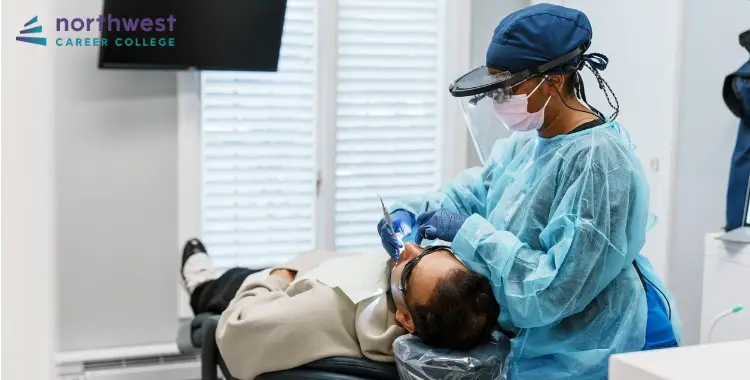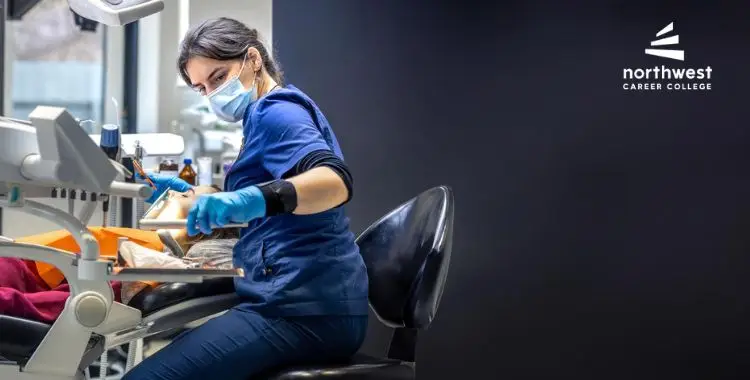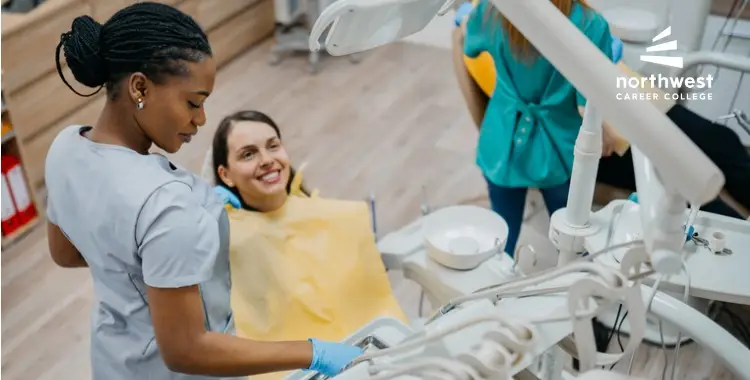Dealing with Medical Emergencies in the Dental Office – Part 1
- Dental Assistant
- March 12, 2024
- 3.7k views
- 4 min read

Although many patients may not realize it, safely and effectively dealing with medical emergencies in a dental office is critical to all dental practices.
For many patients, a trip to the dental office can seem pretty routine… Even a bit benign or boring. However, there are several risks that patients may experience based on their unique medical history, and the entire clinical dental team must be prepared to support each patient’s unique needs.
In this multi-part article series, we will explore a few of the most prominent examples of medical emergencies in the dental office and how to manage them effectively to ensure patient safety. While more emergencies can occur in a dental setting than can be listed in these articles, these are some of the most important ones that new dental assistants need to prepare for when they start working in the field.
Table of Contents
Emergency Management of Syncope (Fainting)
One of the more common medical emergencies in a dental office is vasovagal syncope, more commonly referred to as fainting. Fainting can occur for a variety of reasons in dental settings, but the most common reasons are fear or anxiety. As some of you may know from personal experience, dentophobia is a real challenge for many patients.
Several different stimuli in the dental office can trigger the stress and anxiety accompanying dental visits. The most common trigger is the sight of the needle, which is why dentists take great care to try and hide the needle for anesthesia until the last minute and distract patients during the numbing process. Closely related, the sting of the dental injection as anesthesia is placed in your mouth can also be a trigger for certain patients.
Additional triggers include the sight of blood (depending on the procedure, there can be a significant amount of blood), the smell of the dental office (there are many different chemicals and odors in a typical operatory), the high-pitched squeal at the dental handpiece, and many other patient-specific triggers.
Ultimately, regardless of which trigger comes into play, the fear and anxiety associated with the dental office can induce patients to temporarily lose consciousness (if they are susceptible).
So, how do we manage syncope in the dental office? The first way is prevention. As with many other parts of dentistry, we can anticipate problems before they require medical intervention. Syncope is no different.
Patients who are getting sweaty, mention being lightheaded, or are not communicating clearly are all demonstrating signs that they may be about to have a fainting episode. Other signs include patients saying they feel weak or have compromised vision. While other medical conditions can induce similar symptoms, it is reasonable to prepare for syncope as the likely cause of these symptoms in most dental circumstances.
If you are a clinical dental assistant and observe any combination of these signs in one of your patients, check with the patient to see if they have any known anxieties or fears that you can help address (e.g., removing the needle from the dental tray or turning off equipment to quiet down the room). Reposition the patient into the Trendelenburg position (reclined with their head below their heart and feet) to promote blood flow to the brain, minimizing the risk of a fainting episode.
You should also send someone to get the dentist as soon as reasonably achievable. If another team member is present when you identify this emergency, send them immediately so you do not have to leave the room. When the dentist returns to the operatory, they will assist with further patient assessment and monitoring. If another team member is unavailable, complete the preliminary triage (e.g., remove the trigger if known/possible and reposition the patient) and then report the situation to the dentist.
Although it can be scary, it is fortunate that the most common medical emergency in the dental office does not typically have any long-term adverse effects. That said, while it does not typically require further medical intervention (unless someone falls due to their syncopal episode), the situation will require careful monitoring until the patient is well enough to continue the procedure or take themselves home safely.
Conclusion
Dental assistants can play an essential role in managing medical emergencies in the dental office such as vasovagal syncope. Whether they are identifying the signs of a potential episode, stabilizing the patient and getting the dentist back to the operatory to oversee the situation, or assisting the dentist who was present in the operatory when the episode occurred, they have a significant role to play. In our next article, we will look at some common respiratory emergencies and how to manage them in the dental setting.





